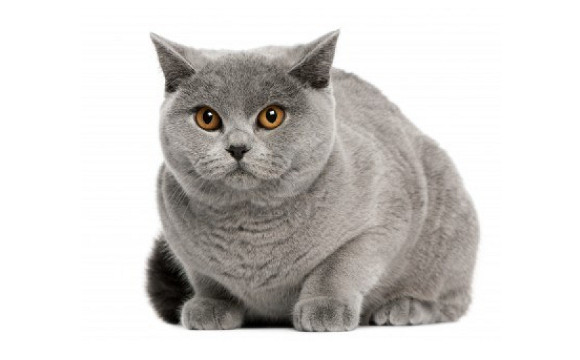Introduction
The emotional world of cats has long been a subject of fascination and debate. While pet owners often attribute human-like emotions to their feline companions, the scientific community holds varying views on the matter. This article delves into the question of whether cats have feelings and emotions, exploring the nuances of feline behavior and the implications for cat-human relationships. Understanding these aspects can enhance the bond between humans and their pets, promoting better care and empathy.
Individuality in Cats
Just as humans display a spectrum of emotions and personalities, so do cats. Each cat is unique, exhibiting behaviors that reflect their individual temperaments. For example, some cats are outgoing and vocal, readily expressing their needs and moods, while others are more reserved and may only communicate through subtle body language. These differences suggest that cats experience a range of emotional states.
- Outgoing Cats: These cats often seek attention, enjoy social interactions, and are not afraid to express their feelings through vocalizations and playful behavior.
- Reserved Cats: These felines might be more independent, preferring solitude and expressing their emotions through subtle cues like tail movements and ear positions.
Theories on Feline Emotions
According to research by Purina, cats exhibit extreme emotional responses that are primarily driven by basic needs such as finding food, playing, guarding territory, and social attachment. These drives suggest that while cats may not experience emotions as complex as humans, they do have basic emotional responses like fear, happiness, and affection.
- Basic Needs and Emotions: Cats’ emotional systems are wired to ensure survival and reproduction. Fear helps them avoid danger, happiness reinforces positive behaviors, and social attachment ensures they stay connected with their family units or human companions.
Responding to Cat’s Feelings
Experts generally agree that cats do exhibit some form of emotion, though opinions differ on the extent and complexity of these emotions. For cat owners, recognizing and responding to their pets’ emotional cues is crucial. Unlike humans, cats do not hide their emotions due to social norms, making their expressions more straightforward.
- Recognizing Emotional Cues: Understanding a cat’s body language, vocalizations, and behavior can help owners respond appropriately to their needs and feelings. For instance, a cat with flattened ears and a low growl may be scared or threatened, while purring and kneading indicate contentment and affection.
Cats as Therapy Animals
The positive bond between humans and cats has therapeutic benefits, particularly in the context of therapy animals. Therapy cats are used in various settings to help individuals with physical, mental, or emotional issues. These cats are trained to be calm and responsive to touch, providing comfort and affection to those in need.
- Benefits of Therapy Cats: Therapy cats can reduce stress, anxiety, and depression. Their presence can also lower blood pressure and improve overall mood, making them valuable companions in hospitals, nursing homes, and mental health facilities.
Understanding Emotions in Cats
Understanding a pet’s emotions is crucial for a harmonious relationship. Whether adopting a cat or a dog, spending time with the animal can help potential pet parents gauge compatibility. Even if full understanding isn’t possible, recognizing and respecting a cat’s emotional responses is key to a rewarding relationship.
- Building a Connection: Spending quality time with a cat, observing their behavior, and engaging in interactive play can strengthen the bond and help owners understand their pet’s unique emotional landscape.
Do Cats Have Emotions? (by Sarah Hartwell)
Emotions in animals are both instinctive and learned, ranging from primitive feelings like fear and lust to complex ones like compassion and jealousy. Recent studies in neuropsychology show that basic emotions have physiological bases and are essential for survival.
- Instinctive and Learned Emotions: While some emotional responses are hardwired for survival, others are learned through interactions with the environment and other beings. For example, a cat may learn to associate the sound of a can opener with the pleasure of mealtime.
Polarized Views on Feline Emotions
Opinions on whether cats have emotions vary widely. Pet owners often observe behaviors indicating emotions like pleasure, frustration, and affection. However, attributing human emotions to cats without understanding their natural behaviors can lead to misconceptions. Scientists are divided; some believe animals are driven purely by survival instincts without complex emotions, while others recognize a limited range of emotional responses.
- Attributing Emotions: It is essential to differentiate between anthropomorphism (attributing human traits to animals) and recognizing genuine emotional responses. Understanding a cat’s natural behavior helps in accurately interpreting their emotions.
The Six Basic Responses
Animals, including cats, have six basic emotional responses rooted in physiology: fear, disgust, desire (lust), sadness, happiness, and anger. These emotions are survival mechanisms, helping animals adapt and thrive. For example, fear triggers caution and potential flight, while happiness encourages repeat beneficial behaviors.
- Fear: A self-preservation instinct that prompts caution or flight in dangerous situations.
- Disgust: Prevents ingestion of harmful substances, ensuring the cat’s well-being.
- Desire (Lust): Drives reproductive behaviors, ensuring the survival of the species.
- Sadness: Can occur in situations of loss or separation, similar to grief or anxiety.
- Happiness: Expressed through contentment, often seen during play or positive interactions.
- Anger: A response to threats or frustration, leading to defensive or aggressive behaviors.
Emotions in Cats
Cats exhibit these basic emotions through physiological and behavioral responses. For example, the Flehmen response in cats, which looks like a sneer, is a way to detect scents, similar to how humans wrinkle their noses in disgust.
- Behavioral Indicators: Cats use a combination of vocalizations, body language, and actions to convey their emotions. Observing these indicators can help owners understand and respond to their cat’s needs.
Practical Implications for Cat Owners
Understanding feline emotions has practical implications for cat owners. By recognizing and responding to their cat’s emotional needs, owners can ensure their pets are happy and healthy.
- Creating a Comfortable Environment: Providing a safe and stimulating environment with plenty of hiding spots, toys, and scratching posts can help reduce stress and promote positive emotions in cats.
- Routine and Predictability: Cats thrive on routine. Maintaining consistent feeding times, play sessions, and bedtime routines can help minimize anxiety and stress.
- Health and Wellness: Regular veterinary check-ups, a balanced diet, and adequate exercise are essential for maintaining a cat’s physical and emotional well-being.
Conclusion
Cats do have feelings, albeit in a more limited and instinctual range compared to humans. Their emotional responses are tied to survival and adaptation. Understanding these emotions can enhance the human-cat bond, ensuring better care and a more fulfilling relationship for both.
By recognizing and respecting the emotional lives of cats, pet owners can foster a deeper, more empathetic connection with their feline companions. This understanding not only improves the quality of life for the cats but also enriches the lives of those who love and care for them.

